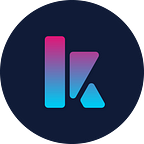QLC Chain Bi-Weekly Report — #014
CONTINUE ON DEVELOPMENT
THE NEXT GENERATION PUBLIC BLOCKCHAIN FOR DECENTRALIZED NETWORK-AS-A-SERVICE (NaaS)
Multidimensional Block Lattice TestNet Launch!
We are honored to launch our TestNet and to be an open source project and appreciate the developer community’s contribution in submitting issues to help us improve the development of the public chain.
The QLC Chain enables network users to monetize their own network resources, namely their bandwidth, to earn cryptocurrency by sharing their network resources. QLC Chain’s mission is to build a decentralized ledger for network services and provide a more secured, and on-demand online experience.
The shared bandwidth can be monetized in different ways and benefit the whole ecosystem of the decentralized mobile network. Firstly, the QLC ecosystem has a working dApp, WinQ (https://winq.net/), which is a decentralized VPN marketplace. Bandwidth providers can register their VPN on the dApp and earn QLC on an hourly basis.
Secondly, the network capabilities can develop multiple decentralized business models on top such as CDN, firewall, virtual routing etc. Therefore, the Operations Support System (OSS) and Business Support System(BSS) can be orchestrated using blockchain technology. According to Transparent Market research, a global market research, analysis, and intelligence firm, OSS BSS System and Platform Market Will be worth US$70.97 Billion by 2024.
The source code is available here:
TestNet source code; https://github.com/qlcchain/qlcchain-classic
TestNet web wallet: https://github.com/qlcchain/QLCWallet
TestNet Wallet server: https://github.com/qlcchain/QLCWallet-Server
The QLC Chain deploys a Multidimensional Block Lattice structure and applies the virtual machine to manage and support integrated smart contracts. Additionally, the public chain utilizes dual consensus: Delegated Proof of Stake (DPoS), and Shannon Consensus, a novel concept proposed the QLC Chain team.
Some key features of the TestNet include
- Multi-token transaction based on the multidimensional block lattice structure
- Smart contract storage on chain and implemented DPoS consensus
- Web Wallet and Explorer
- Instant transaction
- Peak TPS 3,500
The next step for the developer team is to develop the QLC Node using Golang, QLC WASM virtual machine, QLC data storage node, and QLC Oracle node.
Development Progress
overall
— wallet/ledger/database interface definition
— General data structure (account/block/address, etc.) implementation
P2P network
— Consolidate node communication protocol
— P2P libary selection, noise/libp2p
— Node communication protocol implementation (in progress)
Ledger
— Data storage implementation (in progress)
VM
— Implementation plan pre-research
— VM memory management implementation (in progress)
AMA — TestNet Launch!
Toya, PR and Marketing Director of QLC Chain, and Gu Yong, the core developer leading the team in developing the public chain hosted an AMA on the TestNet launch day. If you missed the AMA, you can watch it here:
You can also read the highlights of the AMA here: https://medium.com/qlc-chain/ama-recap-qlc-chain-testnet-launch-to-realize-monetization-of-network-bandwidth-86b86661726f
Media Coverage
“QLC Chain launches testnet for blockchain monetization of network bandwidth” — Crypto Ninja
QLC Chain Releases Blockchain Testnet for Network Bandwidth Monetization
BitcoinExchangeGuide
https://www.youtube.com/watch?v=4JI6CluUjtM&t=1148s
@NYCrytpoTalk shared updates on QLC Chain
“QLC Chain Unveils Private Router and Messenger” — Unhashed
About QLC Chain
QLC Chain is the next generation public Blockchain for decentralized Network-as-a-Service(NaaS). The QLC Chain and supporting ecosystem will enable any individual, business or organization to leverage their network resources to instantly become a service provider or network operator. The mission is to bring people online through a simpler, more pleasant, and more secure way with full transparency.
It deploys a multidimensional Block Lattice architecture and uses virtual machines (VM) to manage and support integrated Smart Contract functionality. Additionally, QLC Chain utilizes dual consensus: Delegated Proof of Stake (DPoS) and Shannon Consensus, which is a novel consensus developed by the QLC Chain team. Through the use of this dual consensus protocol and multidimensional Block Lattice architecture, QLC Chain is able to perform a high number of transactions per second (TPS), provide massive scalability and an inherently decentralized environment for NaaS related applications (dApp).
Learn more about QLC Chain:
- Website (https://qlcchain.org/)
- Twitter (https://twitter.com/QLCchain)
- Reddit (https://www.reddit.com/r/QLCChain)
- Facebook (https://www.facebook.com/QLCchain/)
- Medium (https://medium.com/qlc-chain)
- YouTube (https://www.youtube.com/c/QLCChain)
- Podcast (https://soundcloud.com/qlc-chain)
- Github (https://github.com/qlcchain/)
- LinkedIn (https://www.linkedin.com/company/qlcchain/)
